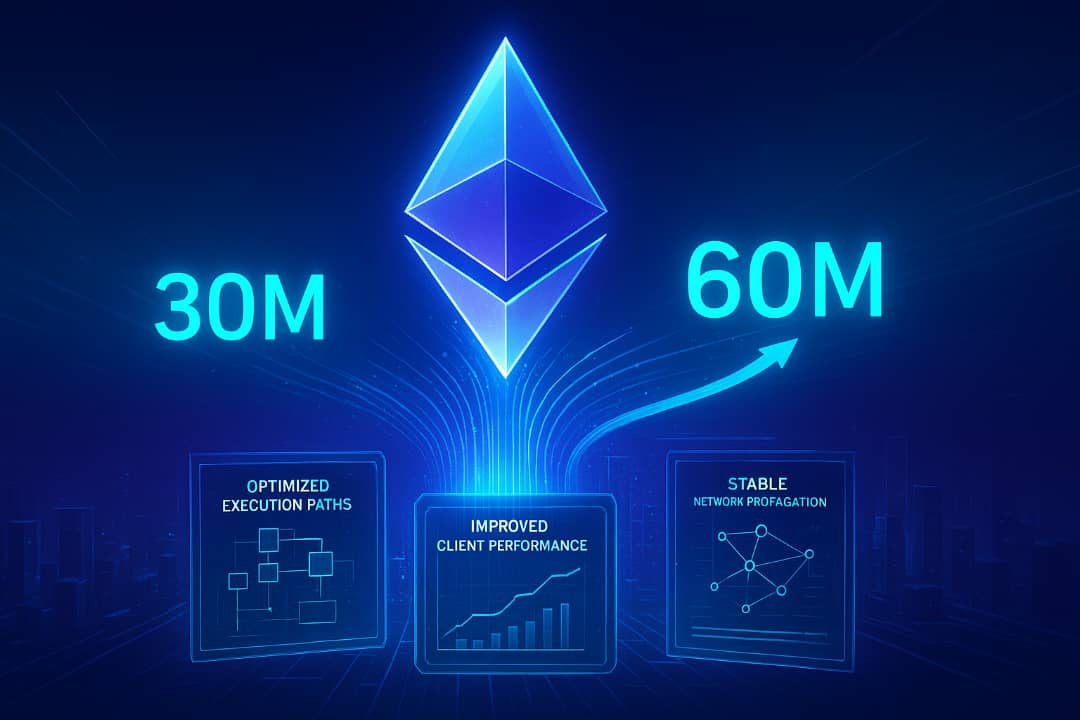
Ethereum, the world’s leading smart contract platform, has hit a significant milestone by doubling its mainnet Gas Limit to 60 million—an unprecedented leap from the 30 million limit that held steady since 2020. This shift signals Ethereum’s readiness to embrace higher levels of activity without compromising its stability. By adopting a data-driven approach, Ethereum developers have dramatically shifted their scaling philosophy, setting the tone for a bolder 2024.
What Is the Ethereum Gas Limit, and Why Does It Matter?
The Gas Limit on Ethereum determines how much computation can fit into a single block. Increasing it allows more transactions and smart contract executions per block, effectively boosting network throughput. However, bigger blocks bring challenges: they test hardware limits, slow propagation times, and raise node storage requirements. These risks kept Ethereum’s Gas Limit capped at 30 million for nearly four years.
Now, with advancements in technology and data-driven confidence, Ethereum has raised the bar.
Why Change Now? The Paradigm Shift Within Ethereum
The decision to double the Gas Limit wasn’t arbitrary. It reflects a paradigm shift within the Ethereum ecosystem toward empirical science and real-world data testing. Historically, Ethereum opted for conservative scaling, prioritizing caution over throughput. But in 2024, a series of critical updates and optimizations built the confidence to take bolder steps.
The shift began with protocol-level upgrades like EIP-7623, which tightened worst-case block size scenarios by increasing Gas costs for calldata. Before this change, unpredictable block sizes forced developers to constrain the Gas Limit. EIP-7623 removed that barrier, paving the way for larger blocks.
Performance Gains Through Client Optimization
Beyond protocol changes, much of Ethereum’s preparation for the 60M Gas Limit came from optimizing client implementations like Nethermind, Erigon, and Reth. These teams identified bottlenecks in critical computations, particularly in cryptographic operations. Using proposals like EIP-7883, they enhanced execution speeds significantly—and the results were measurable. Updated clients can now validate 60M Gas blocks without breaking a sweat.
Stress-testing across major test networks like Sepolia confirmed that the network is both theoretically and practically ready for this leap.
The Road Ahead: Pushing Toward 100M
While the current jump to 60M is substantial, Ethereum developers have their eyes set on an even more ambitious target: 100M Gas Limit. However, the journey to this benchmark will require overcoming three critical challenges:
- Cryptographic Optimizations: Tasks like elliptic curve computations will need further refinement to mitigate execution time during peak activity.
- State Bloat Management: As the blockchain grows, efficient state pruning techniques and advanced storage solutions, such as verkle trees, will be critical to control hardware demands.
- Networking Performance: Block propagation speeds must keep pace with block size increases to maintain consensus reliability.
Ethereum emphasizes a gradual, measured approach, driven by research and performance data rather than speculative assumptions.
The Symbolic Shift in Ethereum Scaling Philosophy
The decision to double the Gas Limit is more than a technical upgrade—it’s a cultural shift. Ethereum is now prioritizing measurable improvements and data-backed scaling over overly cautious practices. This move complements Ethereum’s broader vision of modular scaling through Layer 2 solutions while demonstrating that the Layer 1 network still has room to grow.
A Product to Consider: Ledger Nano X
For enthusiasts looking to dive into Ethereum and other cryptocurrencies securely, consider the Ledger Nano X, a premium hardware wallet designed to secure your crypto assets. With Ethereum scaling for higher throughput, now is the perfect time to ensure your funds are stored safely.
Ethereum’s new 60M Gas Limit ushers in a phase of bold innovation. With evidence-driven upgrades and a focus on measurable performance, the network is poised to handle the growing demands of decentralized applications. Stay tuned as Ethereum continues to redefine blockchain scalability in the years ahead.



